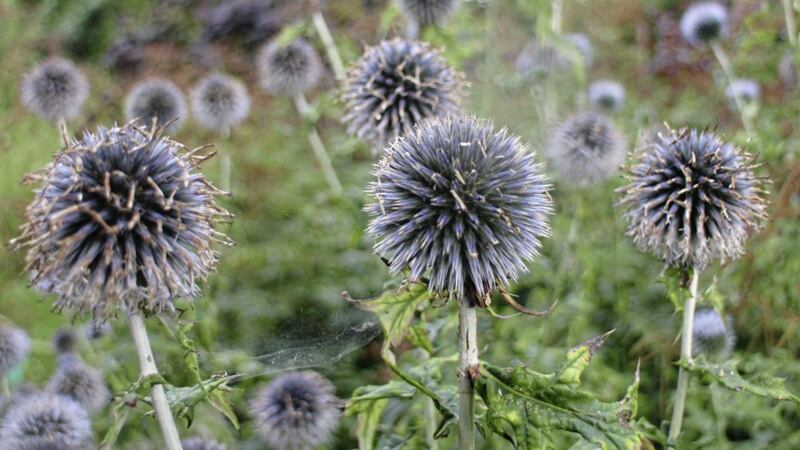IT’S odd how certain phrases excite middle-aged men – 'Six Nations rugby’ ‘leisurely round of golf’, ‘150 break horsepower’, ‘buxom blonde’. I’ll leave you to guess which from that list leaves me cold and which merit further attention but suggest that if you really want to get my pulse racing, simply whisper the words “robust, late-summer flowering herbaceous perennial” in my ear.
Late summer is the time I anticipate most in the garden. If like me you’re a fan of prairie and naturalised planting schemes you’ll no doubt agree that late August and early September are when the plants that fit into these broad categories are at their peak.
Alongside other late-flowering favourites such as echinacea, rudbeckia and mature ornamental grasses like Calamagrostis × acutiflora 'Karl Foerster’, stands a majestic perennial whose blue golf-ball-size flowers are almost incandescent in the soft evening light and always humming with bees and butterflies.
Echinops – or globe thistles – are perhaps an acquired taste. They are not conventionally beautiful flowers with a pistil and surrounding petals yet they are certainly arresting, providing architectural value as well as eye-catching colour.
Not a plant that’ll look good in isolation or if planted in limited numbers, globe thistles work best where they can naturalise and grow en masse, such as in a deep mixed border.
Bred from species that originally hail from around the Mediterranean, this member of the Aster family is drought tolerant and not particularly fussy about soil quality, pH, or consistency as long as it’s not too damp. They’ll tolerate some shade but full sun is best to ensure upright growth and therefore less likelihood of flopping. If your site is exposed, however, they may need staking, or protected with a barrier of ornamental grass to filter the wind.
I could be wrong but generally speaking they’re not a plant you often see for sale in mainstream garden centres where the emphasis is often on immediate appearance – decaying foliage on an elongated stalk would seduce few people.
But plant a dozen or more bulbs together, and though they may not necessarily impress in their first year, in subsequent summers there’ll be a close-knit constellation of spiky silvery-blue balls bouncing on the breeze up to a metre above ground.
The flowers are distinctive globes in differing shades of blue and the ‘prickles’ are harmless, though they do give Echinops its name, which is apparently derived from the Greek for hedgehog.
The best time to buy globe thistles is in late winter or early spring when the bulbs are sold in dormancy. You’ll find a limited selection in the shops, so if you want a more obscure variety, go online.
Plant in a well-drained site in full sun and keep the area weed free. Another plus with globe thistles is that they are very low maintenance, requiring nothing more than cutting back in spring after their decaying foliage has provided winter interest and shelter for insects.
They’re also rarely troubled by pests and diseases, and make excellent dried flower displays.
The variety in my garden, Echinops ritro, is a arguably the most common variety and is easily grown, warranting the RHS’s Award of Garden Merit. It boasts spiky leaves and metallic blue flowers. It looks great alongside other late-flowering perennials and tall grasses.
Echinops bannaticus 'Taplow Blue’ is another good beginner’s plant, while the recommended variety if you don’t have too much space is Echinops ritro ‘Veitch’s Blue’.








